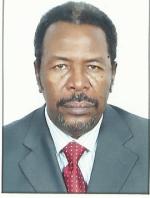


Theme
What is a good assessment and written performance assessment
Category
Student Assessment/Student Engagement
INSTITUTION
King Khalid University

· OSCE was first introduced as part of assessment of 4th year medical students in internal medicine in the year 2009.
· The first and second OSCE were considered trial ones and were composed of 5 stations only.
· In 2011, a 12 station OSCE was conducted.
· The aim of this study was to explore the students acceptance of OSCE as a method of assessment of clinical competence in internal medicine.
· OSCE was well accepted by the students.
· Some of the students were concerned with station time, exam anxiety and the long waiting time in the exam venue.
· OSCE was well accepted by the students.
· The department is encouraged to replace the long and short cases for final students by OSCE.
· A self-administered questionnaire was completed by 4th year medical students immediately after the OSCE.
· The main outcome measures were students' perception of examination attributes including the quality of instructions and organization, and the quality of performance.
· The students perceived OSCE in internal medicine as fair(53%) , comprehensive(56%) and with clear instructions (54%).
· However, some students felt that it was not less stressful than other methods of assessment(30%).
· Although most students were satisfied with the stations time(57%) , a few expressed concerns about inadequacy of time in some stations(13%) .
· Some students expressed concerns about being kept for long time in the exam venue.
· The authors wish to thank all member staff of the department of internal medicine for all their efforts in preparing and executing the OSCE.
We also express our gratitude to the participating students and patients.
1. Harden RM: How to assess clinical competence – an overview. Med Teach 1979, 1:289-296.
2. Fowell SL, Bligh JG: Recent developments in assessing medical students. Postgrad Med J 1998, 74:18-24.
3. Harden RM: What is an OSCE? Med Teach 1988, 10:19-22.
4. Harden RM, Stevenson M, Downie WW, Wilson GM: Assessment of clinical competence using objective structured examination. Br Med J 1975, 1:447-451.
5. Carraccio C, Englander R: The objective structured clinical examination, a step in the direction of competency-based evaluation. Arch Pediatr Adolesc Med 2000, 154:736-741.
6. Harden RM, Caincross RG: The assessment of practical skills: the Objective Structured Practical Examination (OSPE). Stud High Educ 1980, 5:187-196.
7. StataCorp: Stata Statistical Software: Release 7.0 College Station, TX:
StataCorp LP; 2001.
8. Newble DI: Eight years experience with a structured clinical examination. Med Educ 1988, 22:200-204.
9. Duerson MC, Romrell LJ, Stevens CB: Impacting faculty teaching and student performance: nine years' experience with the objective structured clinical examination. Teach Learn Med 2000, 12:176-182.
10. Kowlowitz V, Hoole AJ, Sloane PD: Implementation of the Objective Structured Clinical Examination in a traditional medical school. Acad Med 1991, 66:345-347.
11. Woodburn J, Sutcliffe N: The reliability, validity and evaluation of the objective structured clinical examination in podiatry. Assessment Evaluation Higher Educ 1996, 21:131-147.
12. Allen R, Heard J, Savidge M, Bittengle J, Cantrell M, Huffmaster T: Surveying students' attitudes during the OSCE. Adv Health Sci Educ 1998, 3:197-206
13. Pierre, R., A. Wierenga, M. Barton, J.M. Branday and C. Chris tie, 2004. Student evaluation of an OSCE in pediatric at the Univers ity of the Wes t Indies , Jamaica. BMC Medical Education, 4(22):1-7.
 Send Email
Send Email